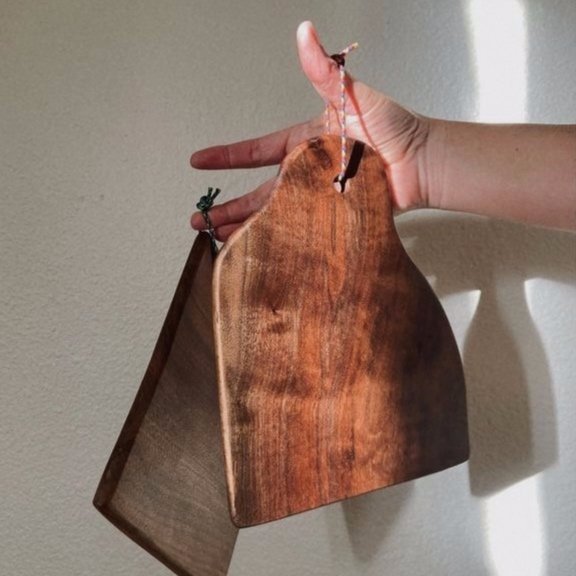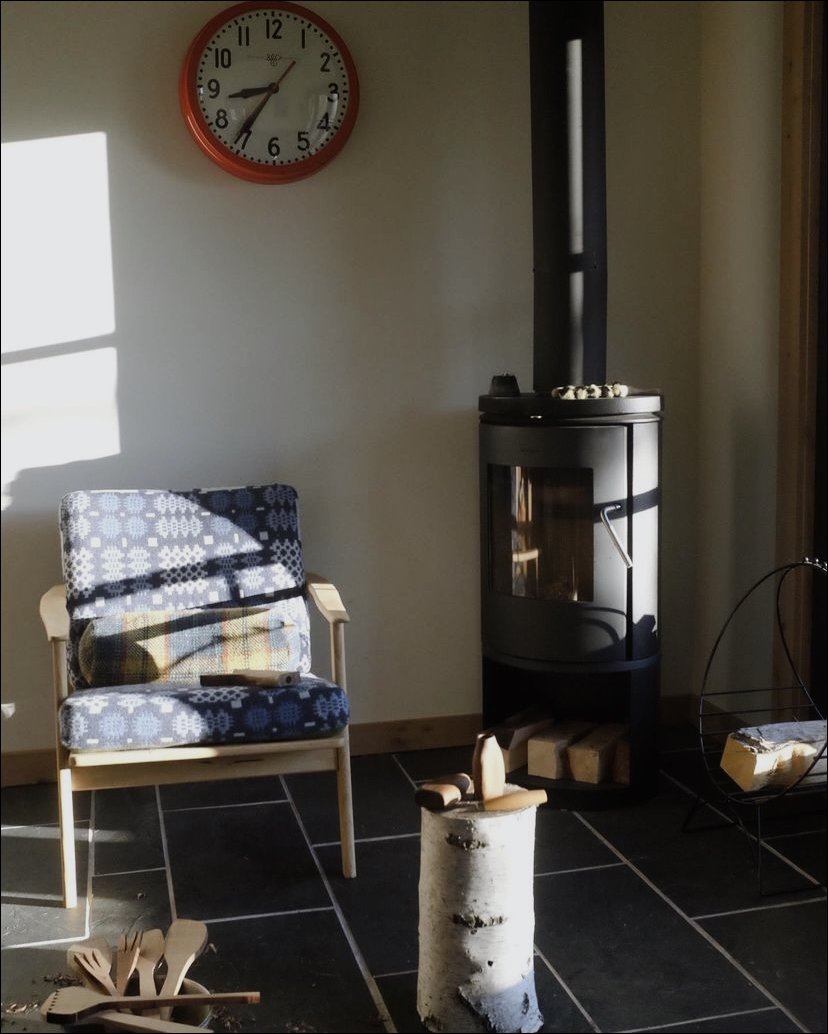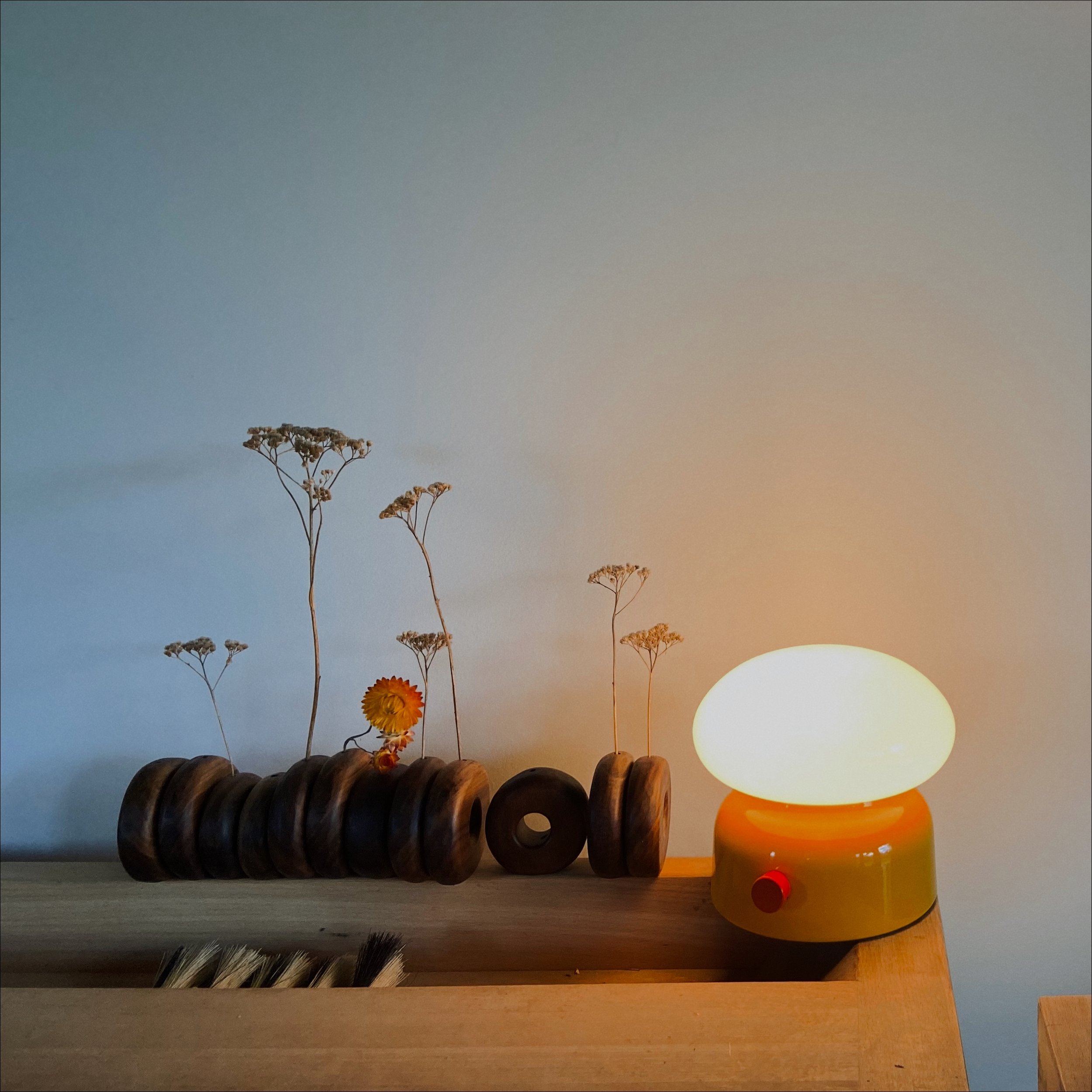Responsible Creation with Kelli Van Noppen of Valley House Woodworking
Words by Rachel Heaney. Photos contributed by Kelli Van Noppen.
Above: Kelli Van Noppen of Valley House Woodworking.
Based in Montana, Kelli Van Noppen officially launched Valley House Woodworking in August 2019 and has been consciously creating ever since. Kelli is one of those spectacular individuals that you feel like you could sit and talk with for hours. She is witty, humble and her honesty definitely keeps things real. Our conversation consisted of everything from career twists and turns, to how she sources wood for her creations, to the use of the word “sustainable”.
Kelli grew up all over the Pacific Northwest, a childhood that had a significant impact on her approach to art and life, and generally influenced the person she is today. Her grandfather was a woodworker and when he passed away, she inherited all of his tools. “He was doing it at a time when I wasn’t really interested in the medium. I was certainly interested in art and design but I didn’t see woodworking as something that I would pursue,” Kelli says. But the skill eventually became a means to connect with him after his passing, and once she carved her first spoon as a gift for her grandmother, she never put the tools down.
The name Valley House is a direct tribute to her grandfather and the home he created with her grandmother in Washington. Kelli notes: “Happy stories about him always took place at the Valley House.” And now that she lives in her own valley home, the name just made sense.
“Small, slow, responsible craft. What does that mean and how do I get there?”
By trade, Kelli is an educator. She taught fourth grade for seven years before transitioning to teaching for a local environmental non-profit, Montana Natural History Center, in 2017. Kelli originally went into education because she was focused on living responsibly, saying, “I was concerned about where we were headed, but then I realized, if we wait for these kids to go find the answers to these problems, it is too late.”
The opportunity to truly delve into woodworking and the creation of Valley House came at almost the perfect time, unbeknownst to Kelli. After the switch to teaching at the history center, she had a few years to hone her woodworking skills before Valley House went live in 2019. And with that shift, everything came together almost seamlessly. When the pandemic hit in March 2020, she began teaching over Zoom from the comfort of her own home and suddenly found herself with a bit more time to learn her craft and build her brand.
The evolution of Valley House has been of similar, opportune nature. The growth of her small but successful business has been organic and steady. “When I first started, I had intentions to just make some spoons and sell them at the farmer’s market. And then it kind of snowballed and everything . . . happened faster than I was expecting,” Kelli says. “I had a limited skill set and I really do still.”
Above: Dalas, salad tongs and perfectly petite bowls. Every item is handmade by Kelli.
And while Kelli’s opinion of her abilities may be modest, there is an inherent artistry in her design philosophy and the objects she creates. “I like blurring boundaries and breaking down otherwise binary things, messing with outside and inside ideas and messing with function and shape,” Kelli notes. Because she is still learning to use a lathe, the baseline shape of her objects is the same, beginning with a simple, flat piece of wood. But, like a true creative, it is easy to see that each Valley House item is varied and one of a kind. Kelli adds: “There’s so much you can do within that shape to make it unique and make it sculptural.”
When I ask if she sees herself working on Valley House full-time, she comments that art and design wasn’t something she thought she could ever make money at or “be serious about”. “I still don’t know if I can do that. But I am older and crankier now,” Kelli laughs. “I’m just kind of forcing myself to do things that maybe I told myself I couldn’t when I was younger.”
She describes her style as “minimal, useful and warm”, in both how she puts together her home and designs her objects. Her influences range from her grandfather, to her own father, a skilled architect, to J.B. Blunk, an artist whom she admires for his thoughtful creations utilizing simple and natural materials. I comment on the impressive ability of an individual, like J.B.Blunk, whose unique style can be easily recognized in everything he touches. Kelli responds: “Maybe that is the working definition, to me, of a true artist or creator. It’s somebody who can visualize the space but also, even if they don’t have the skills . . . can figure out how to acquire that skill set. And pull it off. And it works, you know? And everything is somehow consistently them."
“Maybe that is the working definition, to me, of a true artist or creator. It’s somebody who can visualize the space but then also, even if they don’t have the skills . . . can figure out how to acquire that skill set. And pull it off. And it works, you know? And everything is somehow consistently them.”
However, it does seem that every part of Valley House is considered and consistent with Kelli’s design ethos and lifestyle philosophy. Each account that carries her pieces are female owned, she ships her creations using only recycled materials and the wood she sources is the product of relationships that have been mindfully built over the last few years.
And because she has taken the time to develop those relationships, she is able delve deeper into the origin of the wood she inherits. For example, she’s learned that the myrtlewood she utilizes often has fungal lines called spalting, which means the tree was already diseased and dying when it was cut down. “I think we have this romantic idea that it’s wood; it’s natural. And it is. There are ways to do it ethically and there are ways to do it responsibly. But, the production reality is, when I go buy lumber, I don’t know for sure (if) that walnut (was harvested) in a sustainable way.” Speaking with local arborists and homeowners is a crucial part of how Valley House verifies each piece of lumber was harvested with intent.
For Kelli, the material always comes first. She explains, “I feel a huge sense of responsibility in trying to figure out how to do this as sustainably as I can. And I am really careful with the word ‘sustainability’ in and of itself. It’s kind of a semantics thing and maybe it doesn’t matter, but when I was putting together my mission for Valley House, it was “small, slow and sustainable”. It felt like something I would say as a teacher. It almost was too buzz-wordy or too busy. At the time I was reading Robin Wall Kimmerer's book “Braiding Sweetgrass”. She was talking about the word ‘sustainability’ and she kind of crystallized why I am reticent to use it. She said sustainability implies that you’re managing something so it can continue to produce or function at its current level. And I don’t think we, at least in the US, can. I think we need to pull back, probably more than anybody else. So, I have been slowly switching to the word ‘responsible’, because that also brings in the human aspect of, sure, any wooden object I create you can probably go get at Target for less than half the price. But, then there’s (the question of) where do they source the wood (and) also the human component of who made it, is it safe working conditions, are they getting a living wage? Probably not. To get to that price on that spoon is like, there’s no way.”
“Folks that do have the time, space or money to kind of think about this stuff and reflect and maybe seek more education on a topic should do it. And we have a duty to do that thing and put our money where that good work is happening.”
So how does Kelli ensure her business aligns with her personal values? She explains, "The parts I can control are really watching the waste wood. So a lot of stuff folks would burn, I make into wall stacks or bandana jams. All of my vases. There is a lot you can do with scrap wood. (It’s not) like building a table where it has to be scale.” She also donates 1% of Valley House profits to American forests and is currently in the process of getting solar on her workshop so it can run completely off-grid.
I end our conversation by asking Kelli what responsible living means to her and of course, her answer is well thought out and succinct: “The way I approach questions like this is to ask another question. If I am wrong about this (namely, the climate crisis), what harm might I cause? If I am wrong, it means I’ve used a little less stuff, I haven’t eaten meat for twenty years, I’m recycling. There’s not a lot of harm that can come from those otherwise positive actions . . . Folks that do have the time, space or money to kind of think about this stuff, reflect and seek more education on a topic should do it. And we have a duty to do those things and put our money where that good work is happening.”
Follow Valley House Woodworking on Instagram via @valleyhousewoodworking .






